
Oplodontha viridula, the common green colonel, is a European species of soldier fly.
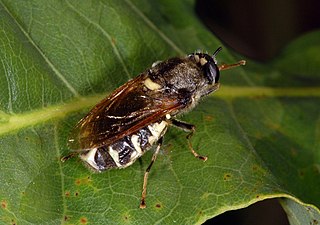
Stratiomys singularia, the flecked general, is a Palearcticspecies of soldier fly.

Sargus iridatus, the iridescent centurion, is a European species of soldier fly.

Sargus bipunctatus, the twin-spot centurion, is a European species of soldier fly.

Sargus cuprarius, the clouded centurion, is a European species of soldier fly.
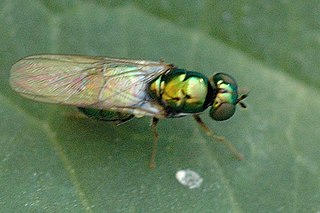
Microchrysa polita, the black-horned gem, is a species of soldier fly found in Europe, Asia, and North America.
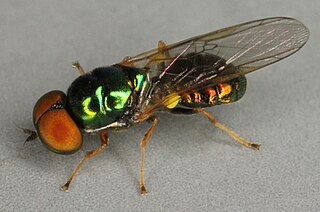
Microchrysa flavicornis, the green gem, is a European species of soldier fly.

Microchrysa cyaneiventris, the black gem, is a European species of soldier fly.
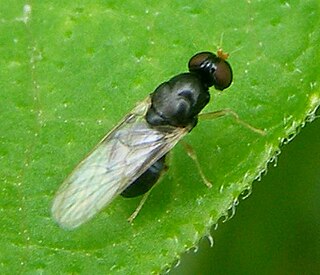
Pachygaster leachii, the yellow-legged black, is a European species of soldier fly.

Pachygaster atra, the dark-winged black, is a European species of soldier fly.
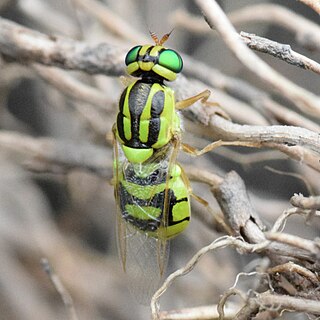
Oxycera trilineata, the three-lined soldier, is a Palearctic species of soldier fly. Boldly marked in yellowish-green and black, it is found in a variety of wetlands, including pools, ditches, fens and swampy river margins. It is found in North European Russia up to Leningrad; Central Asia, Siberia. Western Europe, north up to southern Sweden.

Oxycera pygmaea, the pygmy soldier, is a European species of soldier fly.

Oxycera pardalina, the hill soldier, is a European species of soldier fly.

Oxycera morrisii, the white-barred soldier, is a European species of soldier fly.
Oxycera fallenii, the Irish major, is a Palearctic species of soldier fly. The body length is 7.0 to 9.0.mm. The abdomen has three pairs of yellow spots, in addition to a yellow base and tip. Longitudinal stripes on the mesonotum are not connected with the yellow humeral spot. The legs are entirely yellow. This species is found in South European USSR East to Siberia and Western Europe to Ireland, Central Europe, South Europe and Turkey.

Nemotelus uliginosus, the barred snout, is a Palearctic species of soldier fly.

Nemotelus notatus, the flecked snout, is a European species of soldier fly.

Nemotelus nigrinus, the all-black snout, is a Holarctic species of soldier fly.

Nemotelus is a genus of soldier flies in the family Stratiomyidae. Nemotelus is known from the Nearctic, Afrotropical and the Palaearctic regions.

Beris geniculata, the long-horned black legionnaire, is a European species of soldier fly.



















